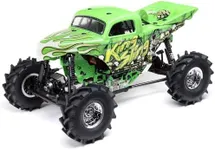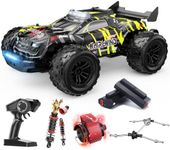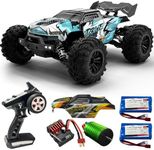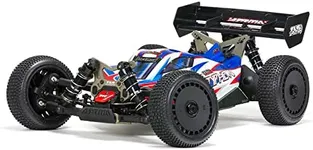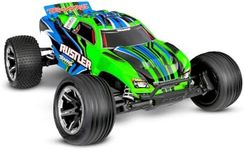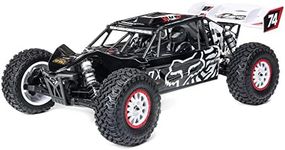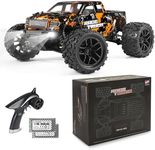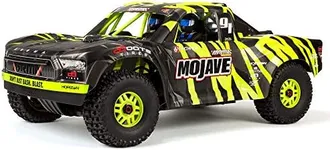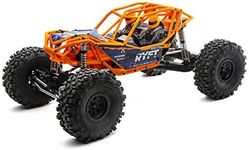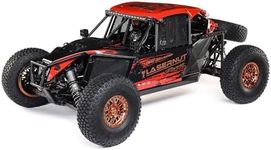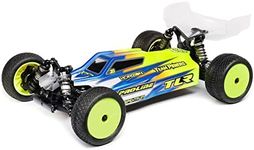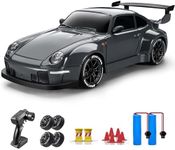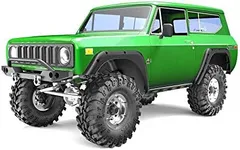Buying Guide for the Best Rc Cars
Choosing the right RC car can be a fun and rewarding experience, but it helps to know what features matter most for your needs. Start by thinking about where you’ll drive your RC car—indoors, outdoors, on smooth pavement, or rough terrain. Also, consider whether you want a car for casual play, racing, or off-road adventures. Understanding the key specifications will help you find a model that matches your interests and skill level.ScaleScale refers to the size of the RC car compared to a real vehicle. Common scales include 1:10, 1:12, 1:16, and 1:24. A 1:10 scale car is larger and often more detailed, while a 1:24 scale car is smaller and more suitable for indoor use. If you want a car that’s easy to transport and store, a smaller scale might be best. For outdoor use and more realistic handling, a larger scale is often preferred.
Drive Type (2WD vs 4WD)Drive type describes how the car’s wheels are powered. 2WD (two-wheel drive) cars are simpler and usually easier to maintain, making them good for beginners and smooth surfaces. 4WD (four-wheel drive) cars have power going to all wheels, which gives better traction and control, especially on rough or slippery terrain. If you plan to drive off-road or want more stability, 4WD is a better choice. For basic driving on flat surfaces, 2WD is often enough.
Motor Type (Brushed vs Brushless)The motor type affects speed, power, and maintenance. Brushed motors are more affordable and easier to maintain, but they tend to be slower and wear out faster. Brushless motors are more efficient, faster, and last longer, but they can be more expensive and may require more advanced knowledge. If you’re just starting out or want a simple car, a brushed motor is a good choice. If you want higher performance and speed, look for a brushless motor.
Battery TypeRC cars typically use either NiMH (Nickel-Metal Hydride) or LiPo (Lithium Polymer) batteries. NiMH batteries are safer and easier to handle, making them suitable for beginners. LiPo batteries are lighter and provide more power and longer run times, but they require careful handling and special chargers. If you want longer playtime and higher speeds, LiPo is the way to go, but for ease and safety, NiMH is a solid option.
Top SpeedTop speed tells you how fast the RC car can go, usually measured in kilometers or miles per hour. Entry-level cars might reach 10-20 km/h, while high-performance models can exceed 50 km/h. If you’re buying for a child or just want to cruise around, a lower top speed is safer and easier to control. For racing or thrill-seeking, look for higher speeds, but remember that faster cars require more skill to handle.
Suspension and Ground ClearanceSuspension and ground clearance determine how well the car handles bumps and uneven surfaces. Cars with good suspension and higher ground clearance are better for off-road driving, as they can handle rocks, grass, and dirt. Lower ground clearance is better for smooth, flat surfaces and gives better stability at high speeds. Choose based on where you plan to drive most often—off-road needs more clearance, while on-road can be lower.
Durability and Build MaterialThe materials used in the RC car’s construction affect how well it can withstand crashes and rough use. Plastic is lightweight and affordable, but may break more easily. Metal parts add strength and durability, especially for off-road or high-speed cars. If you expect lots of bumps and crashes, look for models with reinforced parts or metal components. For gentle use, plastic is usually sufficient.

